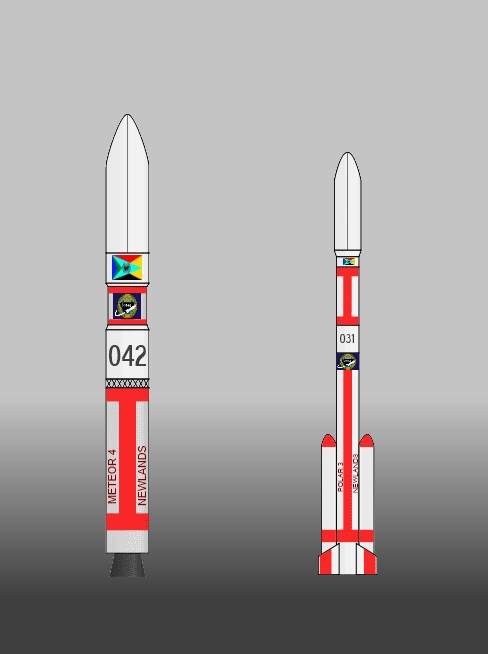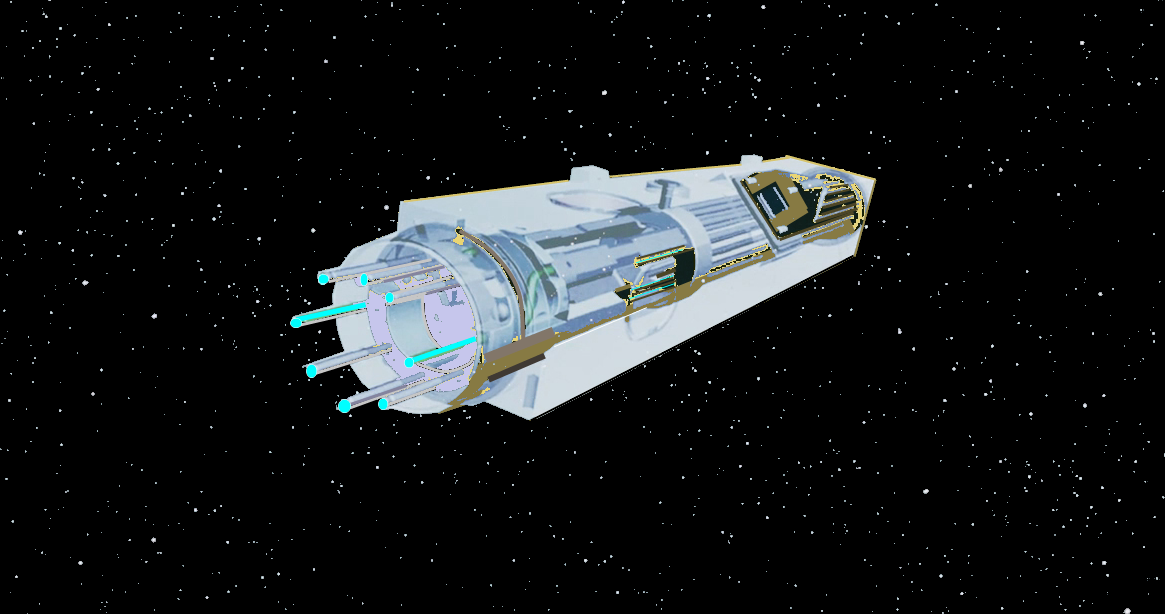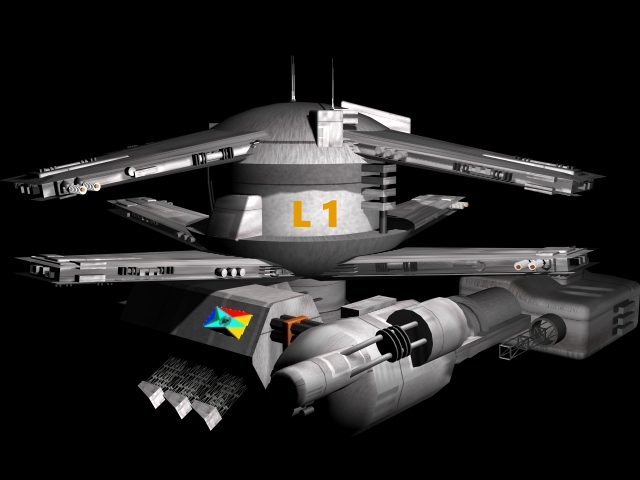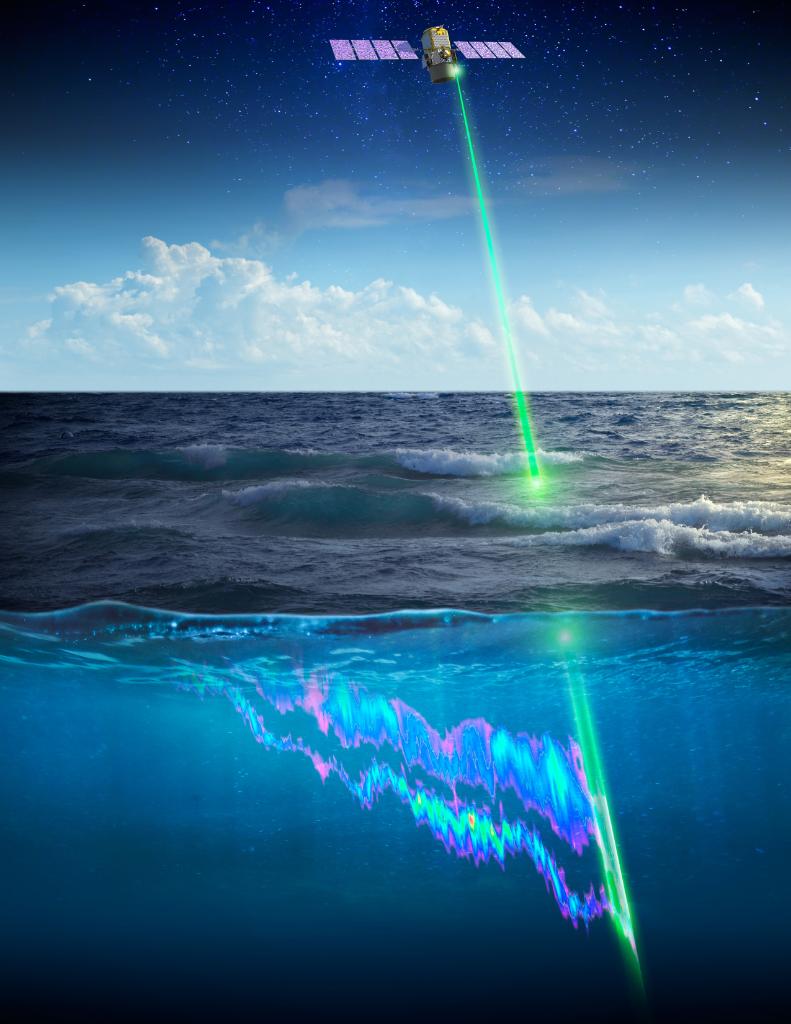1975 till present day
Newlands Rockets 1975 – 2020
Newlands Rockets 1975 – 2020
Newlands space program originated in the penultimate years of Libyan Wars. The Government of Newlands decided to invest into acquiring licenses for space rockets in development in Soviet Union and Japan. Before Ceti III Cosmodrome was built and became functional in 1988, launches were made from the improvised facilities within Titan Aerospace complex situated next to Old City’s Platin International airport.
Newlands Mitsubishi rockets (Titan Aerospace Mitsubishi Mu-3SII and Titan Aerospace Mitsubishi MU-V)
These rockets are of lower payload. First used in 1979, they were equally used for civilian and military parts of Newlands Space Program (MASP). They were best known for being utilized to launch Titan Aerospace Meteor and Polar satellites. No longer in production, there still exist stockpiled assembled rockets able to be exploited. No part of these rockets is reusable.
Newlands Proton rockets (Titan Aerospace Proton IV, Proton V, Proton V max)
These are high-payload rockets. First used in 1986, they are associated with launches of stationary Labyrinthium satellites of MALD, therefore mostly used for the military parts of Newlands Space Program (MASP). No longer in production, there still exist stockpiled assembled rockets able to be exploited. No part of these rockets is reusable.
Titan Norton 1A and 1AB
These are next generation Newlands rockets based on original Russian blueprints upgraded with Newlandean engineering solutions. They are equipped with the Labyrinthium engine on top of their original rocket propulsion. Norton 1AB is equipped with air breathing rocket engines with hugely increased payload. Norton 1A and 1AB are associated with MASP’s orbital, Moon, and Mars missions and building of Newlands space station in Earth’s orbit (Alfa), on the Moon (Delta), and on Mars (Beta). About 35% of Norton 1A is reusable while Norton 1AB contains over 90% reusable components. The reusable parts splash in the ocean within the Newlandean territorial waters.
Newlands Mars Spaceship “Mt Palamar”
Mt Palamar is currently readied for Newlands Mars Spaceship “Mt Palamar” a launch in 2026-27. From the Ceti III Cosmodrome, it will be lifted into Earths orbit by a Titan Norton 1AB rocket. Owing to its almost inexhaustible Labyrinthium fuel, the whole ship will be able to land on Mars and return to Earth after a manned mission currently expected to last three weeks.
Titan Aerospace Labyrinthium stationary satellite LSS
The space part of MALD (MANATO Labyrinthium Defence) is provided by six Labyrinthium stationary satellites positioned in stationary orbits above the Newlands Archipelago. The current version of LSS is armed with a beam weapon for defence from enemy killer satellites, as well as a docking port for the Aurelia space fighters. When an LSS satellite has to be replaced, its Labyrinthium chamber is ejected to splash in the ocean within the Newlandean territorial waters, while the bulk of the satellite is allowed to burn up on reentry into Earth’s atmosphere.
Titan Aerospace Labyrinthium light roaming satellite LLRS
Two LLRS light roaming satellites were added in 2018 and 2019 respectfully as part of defence of the archipelago against penetration of its airspace by hostile drones. They are armed with Labyrinthium beam weapons and have capability for semi-autonomous operation.





